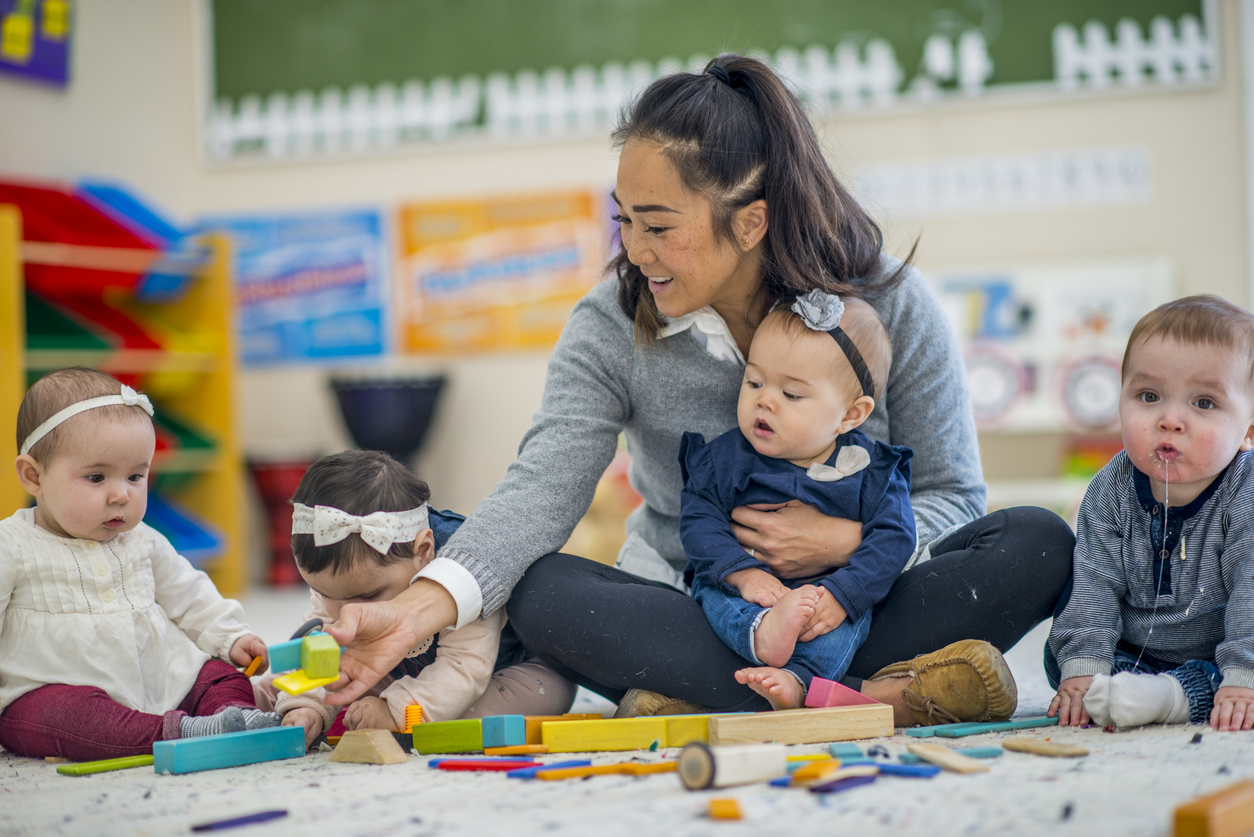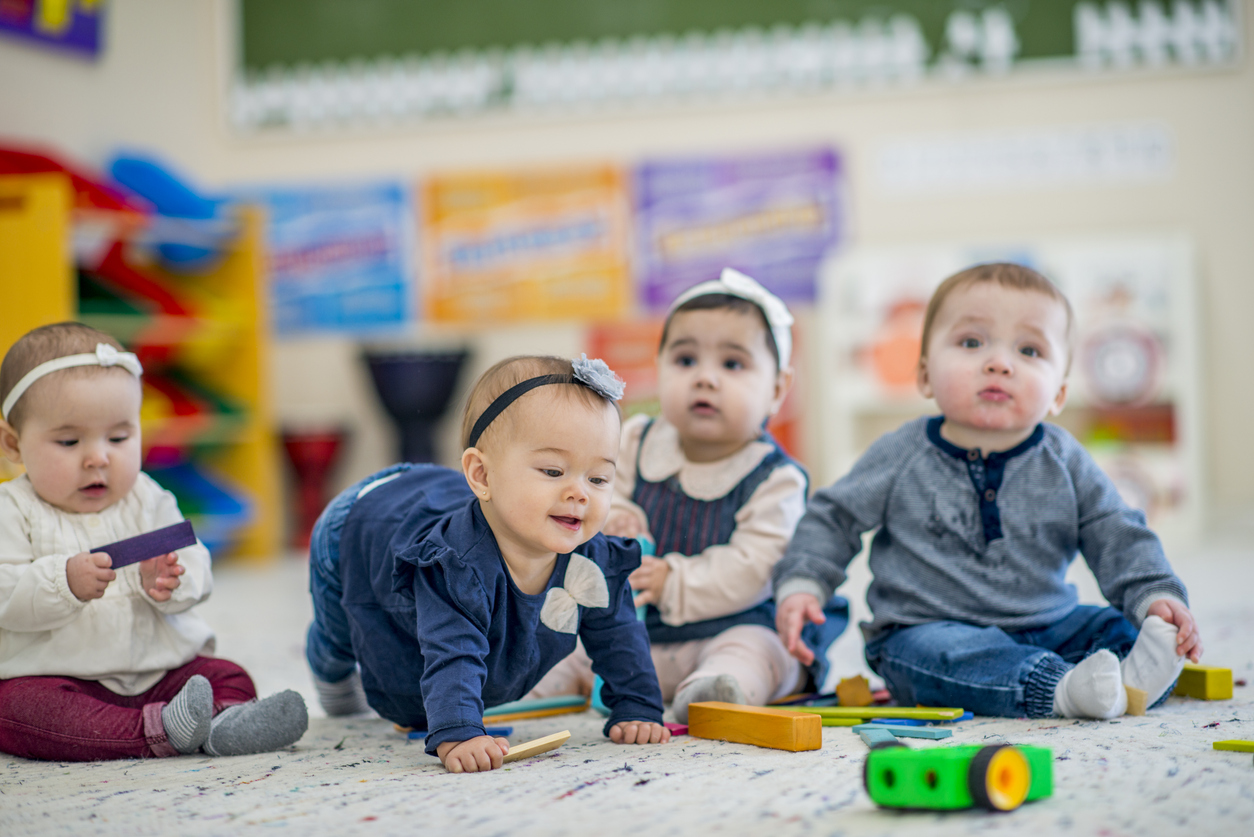Child care operations can vary widely from one center to the next. Your child’s developmental stage and the center’s intensity of focus on academics are two major factors in their daily childcare experience. But to provide an idea of how daycare works, check out the basic schedule below.
Arrival and Free Play Time
The drop-off period can seem chaotic, with each parent bringing their child into the center for the day. Occurring from opening to about 9:30 am, this is also a time for basic administrative issues. Those issues may include payment collection, parent-teacher discussions and fulfillment of other needs. It is also the time to let your child’s teacher know about any issues that may affect him or her during the day, such as medication needs, sleep changes or dietary concerns.
But when you drop off your child, you will notice other kids are generally quietly at play at various stations or centers around the classroom. This is their free play time, in which they can decide what toys to use or whether to occupy themselves with colouring, social interactions or other activities.
Circle Time
Circle time is often the first organized activity of the day, following drop-off. Typically taking place from 9:30 to 10:00 am, this is a time when the students gather together in a circle with their teacher at the lead. The children get to hear what activities are in store for them during the day. It also helps them settle down and start to focus on their activities. The kids may join together to sing a special song or review what they learned in the prior day’s class, too.

a young female teacher sits cross-legged on the floor while she plays with a few babies. She holds on in her lap while she passes some blocks to another. A little boy is off on the side drooling.
Morning Snacks and Diaper Changes or Potty Time
Between 10:00 and 10:30 am, your little one learns about personal hygiene and the routines associated with handwashing, potty time and snack time. They enjoy a healthy snack after their hygiene activities and then follow up eating with another hand washing to clean up sticky hands and faces.
Daily Activity
From snack time’s end at 10:30 to about 11:00 am, your child care center likely teaches their specific curriculum according to the children’s developmental stages. This is a time for your child to learn new things and experience them firsthand. For example, the infant class can expose six-month-old babies to new textures, shapes, colours or sounds. Preschool children can learn their letters or numbers using play dough, art projects or worksheets. Each class may have their own monthly or weekly activity theme, too.
Outdoor Play
For another hour of the day, such as before lunchtime from 11:00 to 12:00, your child will enjoy physical activity as part of the sports and fitness routine. This playtime can take place indoors or outdoors, according to the weather. The daily routine of physical exertion helps your child develop healthy practices, and they also learn through guided activities and movement.
Lunchtime
Young children use a lot of energy. By about noon, they are hungry and ready for lunch. They repeat their snack time hygiene routine of handwashing before eating. Then, they get cleaned up after their meal and go through their potty routine or diaper changes again.
Nap Time
After a lot of learning and physical activity, kids need a rest period. Following lunch is the perfect time for this, typically from 1:00 to 3:00 pm. They settle into their nap positions, cover with blankets and listen to soothing music, a story read aloud or simply fall asleep as a group.
Wakeup, Diaper Change and Potty Time
After awakening at 3:00 pm, the children put away their naptime blankets and again go through the hygiene and potty break. The handwashing takes place just before they sit down for their afternoon snack. Diaper changes are also provided for young children and infants at this time.
Daily Review or Storytime
After the afternoon snack and between 3:30 and 4:50 pm, most daycare centers provide time for the teacher to review the daily learning activities with his or her class. The kids also get to discuss what they enjoyed and learned. An alternative is to have storytime with the teacher reading a book aloud. For older kids, this time is typically used for an art project or additional learning.
Free Play and Parent Pickup Time
With the center again becoming busy with parents coming in to pick up their children, the period of time between 4:30 and 6:00 pm typically involves free play or other activities. Activities can involve art projects, playing music, dancing or singing. It is also a good time to draw, colour, read books or play at one of the various special interest stations in the classroom.
